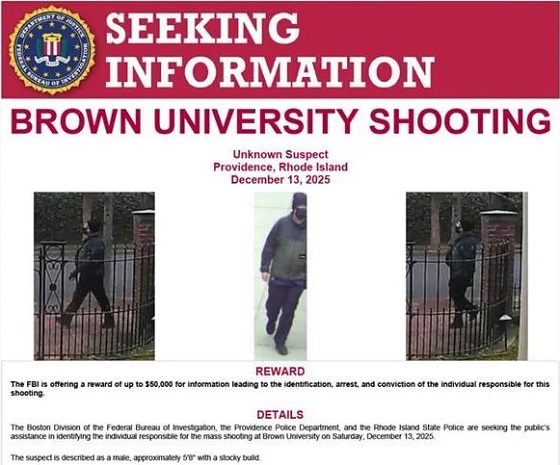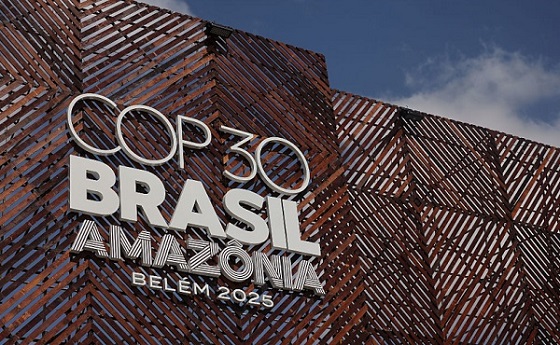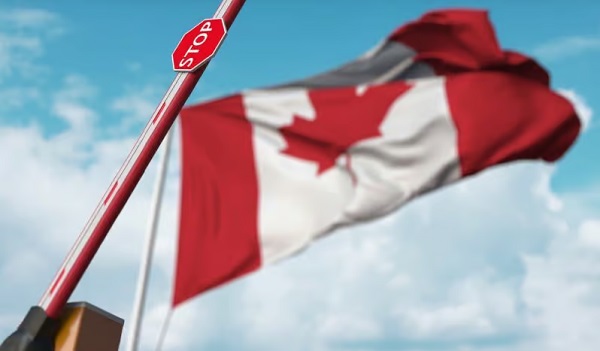Alberta
Canadian grain storage arrived just in time for Ukrainian farmer

CHERNEVE, LVIV OBLAST, UKRAINE — Oleh His marches with pride and purpose in rain-soaked mud through row upon row of large white polyethylene bags, each stamped with a Canadian logo and filled to bursting with this year’s harvest of grain.
The 24-year-old grain farmer with a slight build, fair hair and braces is also a volunteer with the Ukrainian military. He splits his time between running the family farm and sourcing money and supplies for the front.
When Russia invaded Ukraine last year, His knew right away he would have a problem.
“The logistical connection of agricultural products with the rest of the world has broken,” His said in Ukrainian through a translator at his farm, AgroKorovai, just 17 kilometres from the border with Poland.
Despite the relatively safe location, the war has devastated local farms in the region.
Usual trade routes through the Black Sea to Africa and Asia were cut off. The cost of diesel and fertilizer used to grow and harvest crops grew substantially.
The port blockages caused a food crisis in some parts of Africa. Without large warehouses to keep the harvest from rotting, His said some farms had to sell their grain at a loss and went bankrupt.
In December, after farmers delayed harvesting their crops for as long as they possibly could, the UN Food and Agriculture Organization (FAO) distributed 26,000 grain sleeves donated by Canada and Japan all over Ukraine.
“We thought they wouldn’t arrive in time but everything was fine,” said His, who received 10 sleeves from Canada and also bought some of his own, just in case.
The sleeves are long white plastic bags that span the lengths of the field. They protect grain from the elements until it can be sold and exported.
“We sleeved it and freed up our hands to wait and get it out smoothly. This saved us a lot of money,” His said.
The mild winter was on their side, as far as timing was concerned, said Pierre Vauthier, head of the FAO control office in Ukraine.
“Some of it arrived very late and yes, of course, they’re going to use (the sleeves) next year, but it’s very, very marginal,” Vauthier said in an online interview from Kyiv.
Many farms closer to the front line have seen what little storage capacity they had blown up or destroyed by enemy shelling and landmines, said Vauthier, and about 15 per cent of the grain storage capacity in the country is gone.
“The impact is quite big,” he said.
The news prompted Canada to partner with Japan to prevent Ukrainian grain from going to waste with a $52-million investment into the sleeves.
The project was announced last June, when Prime Minister Justin Trudeau met other G7 leaders in Germany to discuss measures to halt the famine caused by the Russian invasion.
Altogether the grain storage should prevent more than five million tonnes of grain from going to waste, but the challenges are unlikely to abate as Ukraine enters its second year of war.
A deal struck in the summer between Russia and Ukraine to open up ports in Odesa to allow grain exports to be transported through the Black Sea has improved the situation, but it’s slow and inefficient, Vauthier said.
It is up for renewal in March, and Vauthier said reaching another deal is essential.
“I hope that they’re going to come to an agreement, they’re going to agree to continue to do what is absolutely critical for the country and for food security worldwide,” he said.
He expects exports to be squeezed again in 2023, and said more grain sleeves might be needed to preserve the grain harvest. Smaller farms will need mobile grain storage units, which look like plastic circus tents, for warehousing grain.
The FAO is also working to deliver seeds and generators to farms near the front line to keep up production.
His said he hopes Canada and other countries will donate more sleeves, but with the profit he was able to salvage this year he plans to buy some of his own next year.
“It is much more profitable than building a warehouse,” he said. “Building materials have become more expensive, so building warehouses is more costly than before. We built warehouses for 5,000 tons last year, which was expensive, and now it would be even more costly.”
The war has also spurred him to look for new markets for his grain, rather than selling directly to traders in Odesa.
He now has a truck that his farm loads up with grain from the sleeves and delivers it directly to Poland.
“Any crisis is an opportunity,” His said.
“Even in such a crisis, we do not give up but start looking for opportunities.”
This report by The Canadian Press was first published Feb. 23, 2023.
Laura Osman, The Canadian Press
Alberta
Alberta’s new diagnostic policy appears to meet standard for Canada Health Act compliance

From the Fraser Institute
By Nadeem Esmail, Mackenzie Moir and Lauren Asaad
In October, Alberta’s provincial government announced forthcoming legislative changes that will allow patients to pay out-of-pocket for any diagnostic test they want, and without a physician referral. The policy, according to the Smith government, is designed to help improve the availability of preventative care and increase testing capacity by attracting additional private sector investment in diagnostic technology and facilities.
Unsurprisingly, the policy has attracted Ottawa’s attention, with discussions now taking place around the details of the proposed changes and whether this proposal is deemed to be in line with the Canada Health Act (CHA) and the federal government’s interpretations. A determination that it is not, will have both political consequences by being labeled “non-compliant” and financial consequences for the province through reductions to its Canada Health Transfer (CHT) in coming years.
This raises an interesting question: While the ultimate decision rests with Ottawa, does the Smith government’s new policy comply with the literal text of the CHA and the revised rules released in written federal interpretations?
According to the CHA, when a patient pays out of pocket for a medically necessary and insured physician or hospital (including diagnostic procedures) service, the federal health minister shall reduce the CHT on a dollar-for-dollar basis matching the amount charged to patients. In 2018, Ottawa introduced the Diagnostic Services Policy (DSP), which clarified that the insured status of a diagnostic service does not change when it’s offered inside a private clinic as opposed to a hospital. As a result, any levying of patient charges for medically necessary diagnostic tests are considered a violation of the CHA.
Ottawa has been no slouch in wielding this new policy, deducting some $76.5 million from transfers to seven provinces in 2023 and another $72.4 million in 2024. Deductions for Alberta, based on Health Canada’s estimates of patient charges, totaled some $34 million over those two years.
Alberta has been paid back some of those dollars under the new Reimbursement Program introduced in 2018, which created a pathway for provinces to be paid back some or all of the transfers previously withheld on a dollar-for-dollar basis by Ottawa for CHA infractions. The Reimbursement Program requires provinces to resolve the circumstances which led to patient charges for medically necessary services, including filing a Reimbursement Action Plan for doing so developed in concert with Health Canada. In total, Alberta was reimbursed $20.5 million after Health Canada determined the provincial government had “successfully” implemented elements of its approved plan.
Perhaps in response to the risk of further deductions, or taking a lesson from the Reimbursement Action Plan accepted by Health Canada, the province has gone out of its way to make clear that these new privately funded scans will be self-referred, that any patient paying for tests privately will be reimbursed if that test reveals a serious or life-threatening condition, and that physician referred tests will continue to be provided within the public system and be given priority in both public and private facilities.
Indeed, the provincial government has stated they do not expect to lose additional federal health care transfers under this new policy, based on their success in arguing back previous deductions.
This is where language matters: Health Canada in their latest CHA annual report specifically states the “medical necessity” of any diagnostic test is “determined when a patient receives a referral or requisition from a medical practitioner.” According to the logic of Ottawa’s own stated policy, an unreferred test should, in theory, be no longer considered one that is medically necessary or needs to be insured and thus could be paid for privately.
It would appear then that allowing private purchase of services not referred by physicians does pass the written standard for CHA compliance, including compliance with the latest federal interpretation for diagnostic services.
But of course, there is no actual certainty here. The federal government of the day maintains sole and final authority for interpretation of the CHA and is free to revise and adjust interpretations at any time it sees fit in response to provincial health policy innovations. So while the letter of the CHA appears to have been met, there is still a very real possibility that Alberta will be found to have violated the Act and its interpretations regardless.
In the end, no one really knows with any certainty if a policy change will be deemed by Ottawa to run afoul of the CHA. On the one hand, the provincial government seems to have set the rules around private purchase deliberately and narrowly to avoid a clear violation of federal requirements as they are currently written. On the other hand, Health Canada’s attention has been aroused and they are now “engaging” with officials from Alberta to “better understand” the new policy, leaving open the possibility that the rules of the game may change once again. And even then, a decision that the policy is permissible today is not permanent and can be reversed by the federal government tomorrow if its interpretive whims shift again.
The sad reality of the provincial-federal health-care relationship in Canada is that it has no fixed rules. Indeed, it may be pointless to ask whether a policy will be CHA compliant before Ottawa decides whether or not it is. But it can be said, at least for now, that the Smith government’s new privately paid diagnostic testing policy appears to have met the currently written standard for CHA compliance.

Lauren Asaad
Policy Analyst, Fraser Institute
Alberta
Housing in Calgary and Edmonton remains expensive but more affordable than other cities
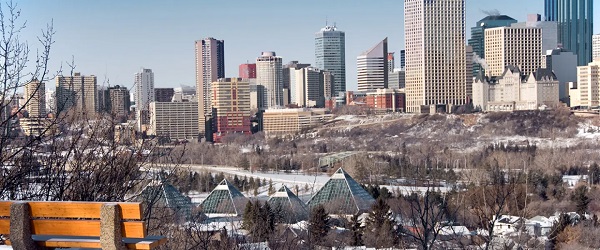
From the Fraser Institute
By Tegan Hill and Austin Thompson
In cities across the country, modest homes have become unaffordable for typical families. Calgary and Edmonton have not been immune to this trend, but they’ve weathered it better than most—largely by making it easier to build homes.
Specifically, faster permit approvals, lower municipal fees and fewer restrictions on homebuilders have helped both cities maintain an affordability edge in an era of runaway prices. To preserve that edge, they must stick with—and strengthen—their pro-growth approach.
First, the bad news. Buying a home remains a formidable challenge for many families in Calgary and Edmonton.
For example, in 2023 (the latest year of available data), a typical family earning the local median after-tax income—$73,420 in Calgary and $70,650 in Edmonton—had to save the equivalent of 17.5 months of income in Calgary ($107,300) or 12.5 months in Edmonton ($73,820) for a 20 per cent down payment on a typical home (single-detached house, semi-detached unit or condominium).
Even after managing such a substantial down payment, the financial strain would continue. Mortgage payments on the remaining 80 per cent of the home’s price would have required a large—and financially risky—share of the family’s after-tax income: 45.1 per cent in Calgary (about $2,757 per month) and 32.2 per cent in Edmonton (about $1,897 per month).
Clearly, unless the typical family already owns property or receives help from family, buying a typical home is extremely challenging. And yet, housing in Calgary and Edmonton remains far more affordable than in most other Canadian cities.
In 2023, out of 36 major Canadian cities, Edmonton and Calgary ranked 8th and 14th, respectively, for housing affordability (relative to the median after-tax family income). That’s a marked improvement from a decade earlier in 2014 when Edmonton ranked 20th and Calgary ranked 30th. And from 2014 to 2023, Edmonton was one of only four Canadian cities where median after-tax family income grew faster than the price of a typical home (in Calgary, home prices rose faster than incomes but by much less than in most Canadian cities). As a result, in 2023 typical homes in Edmonton cost about half as much (again, relative to the local median after-tax family income) as in mid-sized cities such as Windsor and Kelowna—and roughly one-third as much as in Toronto and Vancouver.
To be clear, much of Calgary and Edmonton’s improved rank in affordability is due to other cities becoming less and less affordable. Indeed, mortgage payments (as a share of local after-tax median income) also increased since 2014 in both Calgary and Edmonton.
But the relative success of Alberta’s two largest cities shows what’s possible when you prioritize homebuilding. Their approach—lower municipal fees, faster permit approvals and fewer building restrictions—has made it easier to build homes and helped contain costs for homebuyers. In fact, homebuilding has been accelerating in Calgary and Edmonton, in contrast to a sharp contraction in Vancouver and Toronto. That’s a boon to Albertans who’ve been spared the worst excesses of the national housing crisis. It’s also a demographic and economic boost for the province as residents from across Canada move to Alberta to take advantage of the housing market—in stark contrast to the experience of British Columbia and Ontario, which are hemorrhaging residents.
Alberta’s big cities have shown that when governments let homebuilders build, families benefit. To keep that advantage, policymakers in Calgary and Edmonton must stay the course.
-
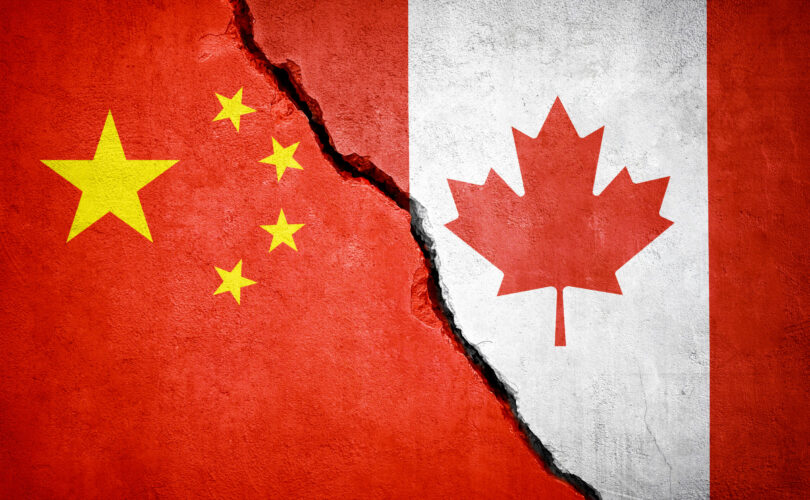
 International2 days ago
International2 days agoOttawa is still dodging the China interference threat
-

 Business2 days ago
Business2 days agoTaxing food is like slapping a surcharge on hunger. It needs to end
-

 Business20 hours ago
Business20 hours agoThere’s No Bias at CBC News, You Say? Well, OK…
-
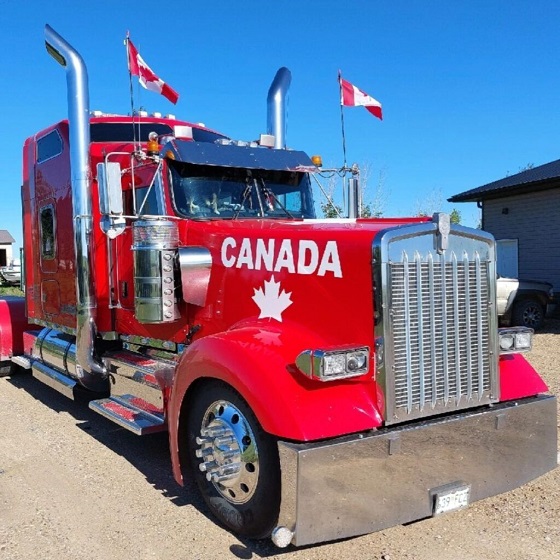
 COVID-192 days ago
COVID-192 days agoJudge denies Canadian gov’t request to take away Freedom Convoy leader’s truck
-
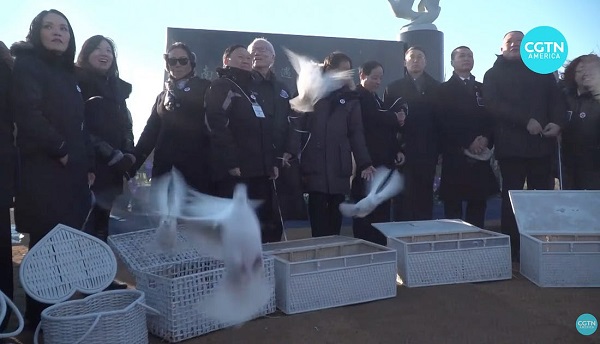
 espionage2 days ago
espionage2 days agoCarney Floor Crossing Raises Counterintelligence Questions aimed at China, Former Senior Mountie Argues
-

 Energy2 days ago
Energy2 days ago75 per cent of Canadians support the construction of new pipelines to the East Coast and British Columbia
-

 Health1 day ago
Health1 day agoFDA warns ‘breast binder’ manufacturers to stop marketing to gender-confused girls
-
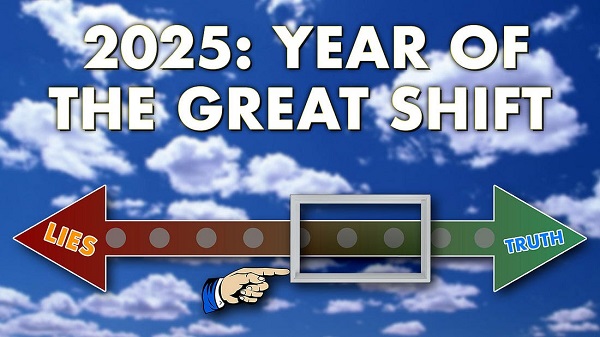
 International1 day ago
International1 day ago2025: The Year The Narrative Changed











